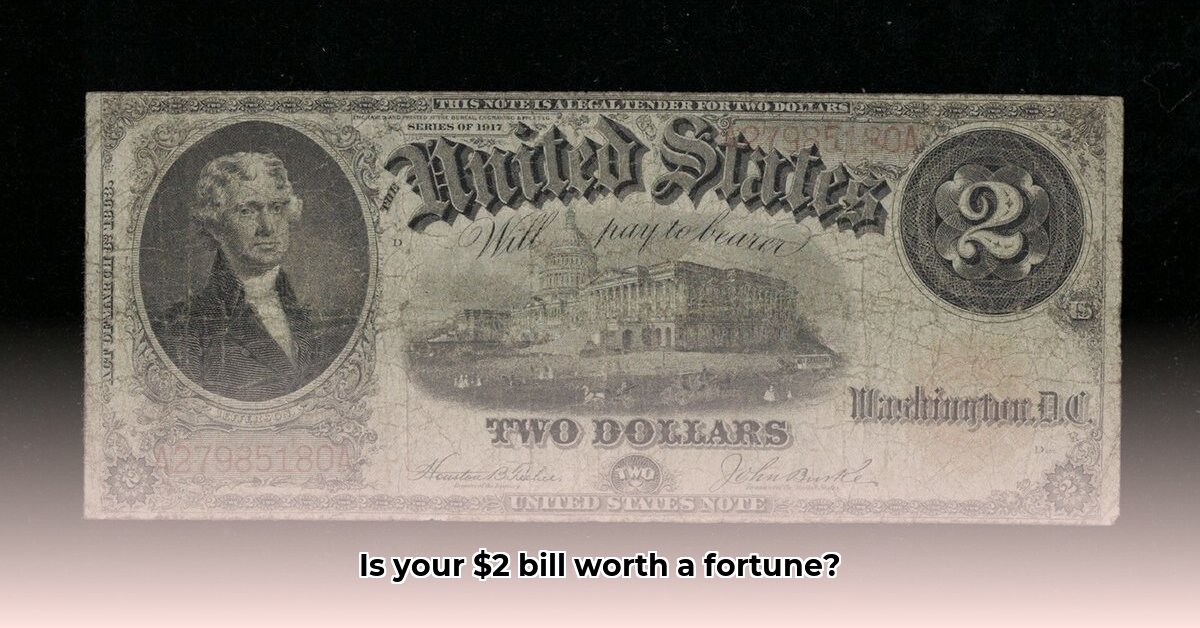
Understanding the Value of Your 1917 $2 Bill
Unearthing a 1917 two-dollar bill sparks curiosity about its worth. This guide provides a structured approach to assessing its value, covering key factors influencing its potential worth. Remember, the value depends heavily on condition, rarity, and specific features.
Key Factors Affecting Value: Condition, Rarity, and Specific Details
Condition: The Cornerstone of Value
The condition of your bill is paramount. Think of it like a classic car – a perfectly preserved model is worth far more than a rusty wreck. Numismatists (coin and currency experts) use grading systems, most commonly the Sheldon scale (ranging from Poor-1 to Gem Uncirculated-70), to assess condition. Higher grades translate to significantly higher values. Look closely for creases, tears, fading, or stains – these imperfections directly impact value. Visual comparisons with graded examples online can greatly aid in assessment. Did you know that a bill graded Gem Uncirculated can be worth ten times more than a circulated one?
Rarity: Unveiling Hidden Treasures
Rarity significantly increases value. Certain features make a 1917 $2 bill exceptionally rare and thus more valuable. "Star notes" (indicated by an asterisk (*) in the serial number) replace misprinted bills and are much rarer. Even rarer are "mule notes," resulting from printing errors combining elements from different plates. These are extremely rare and highly sought after. Different signature combinations also influence value; some combinations are simply more uncommon than others. This adds another layer of complexity to valuation. What's the likelihood of finding a mule note amongst your 1917 bills? The odds are incredibly slim!
Specific Details: The Subtle Nuances
Beyond condition and rarity, minute details matter. The red Treasury seal's condition and design, the clarity of the printing, and the serial numbers themselves (color, style, and sequences) can all subtly affect value. A thorough inspection is crucial. Even minor variations in ink color can influence a collector's assessment.
Valuation: A Wide Range of Possibilities
The value of a 1917 $2 bill varies wildly. While a typical circulated bill might be worth $30-$80, exceptionally rare notes in mint condition can fetch thousands, even tens of thousands of dollars. Online resources provide estimates, but these should be considered rough guides only. Significant discrepancies exist between online valuations; therefore, professional appraisal is essential for accurate valuation, especially for bills with exceptional qualities or rarity.
Authentication and Appraisal: Ensuring Authenticity
Authenticity is crucial. Counterfeit bills exist, so professional authentication is highly recommended, particularly for higher-value notes. Don't rely solely on online opinions. Reputable numismatists and dealers offer authentication and appraisal services. They possess the expertise to distinguish genuine bills from forgeries and provide an accurate valuation based on their trained eye and knowledge of the market. Remember that accurate authentication is essential before even thinking of a potential sale or trade.
Actionable Steps: A Step-by-Step Guide to Valuation
Close Examination: Carefully inspect the bill for condition, noting any signs of rarity (star notes, mules, signature combinations). Take high-quality photographs of both sides in well-lit conditions.
Online Research (with Caution): Compare your bill’s features to examples online, keeping in mind that online valuations are only broad estimates and potentially lack accuracy.
Professional Appraisal (Recommended for High-Value Bills): If you suspect your bill is worth a substantial amount, secure a professional appraisal from a reputable numismatist or dealer. This ensures accurate valuation and authentication. This step is crucial because it protects you from misinterpreting the value of your currency.
Conclusion: Preserving Your Piece of History
Determining the value of your 1917 $2 bill involves a thorough assessment of its condition, rarity, and specific features. While online resources offer a starting point, professional appraisal is vital for accurate valuation, particularly for higher-value bills. Responsible collecting practices encompass proper storage to maintain the condition of your valuable currency.